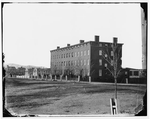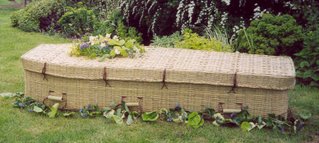
When I set out to write Grave Matters, I imagined a future reader handing the finished book to her family and saying, "When I die, do chapter [fill in the blank]."
I consequently laid out the book in what I hope is a fairly straightforward arrangement. Each chapter presents a picture of a greener, more natural alternative to the standard funeral home send-off, as experienced by a real family in a real place. An appendix offers a brief how-to, with enough information to help readers pursue the given alt.burial strategy when the time comes.
Still, I'm under no illusion that arranging your own future green burial is as simple as handing over the book to a loved one, with a bookmark stuck in the relevant chapter. Funerary laws vary from state to state, region to region. The backyard burial that's possible in the county I examine in the book may be illegal in yours. When an expected death occurs at home, your municipality may demand more than the hospice nurse's declaration to that effect when issuing a permit that allows you to transport the body to the crematory or cemetery.
Your family, who will be in charge of overseeing your final arrangements, will need concrete, site-specific information that's beyond the reach of the book. They'll need to know, for example, the best, local crematory to use and just where to turn to buy a cardboard coffin. Whom, exactly, should they contact to arrange the scattering of your ashes at sea? If you die in the hospital, what paperwork do they need in order to transport your body back to the house for the home funeral?
And, by the way, where's the will that states your preference for your green burial of choice? Some hospitals, after all, will only release your body to family members if you've indicated that in a living will or other pertinent document. Otherwise, the funeral director gets involved.
Your family can probably come up with the answers to those and the host of others that arise with death comes calling. But you can save them no small effort and even greater anxiety -- and guarantee that the green burial you want comes about as you envision it -- if you plan for it yourself.
What does that mean exactly?
In the coming weeks we'll look into question. I'll use this space to craft a plan a family could use to conduct a natural burial in this corner of the planet. The information I glean, which I'll post, will be specific to this locale, of course. But the questions I ask -- if not the specific answers -- are the very ones you'll have to consider for yourself and your family. At the very least, I hope the exercise I conduct here inspires you to undertake a similar one in the place you call home.
Next week: Checking in with the local hospital.
And speaking of hospitals: In the course of searching for funeral images of Abraham Lincoln, who was embalmed and subsequently viewed by some million mourners, I came across this Civil War-era photo of the Douglas Hospital in Washington, D.C. Source: Library of Congress.

